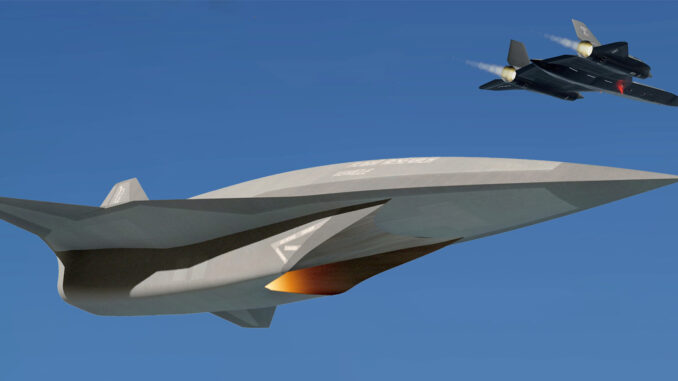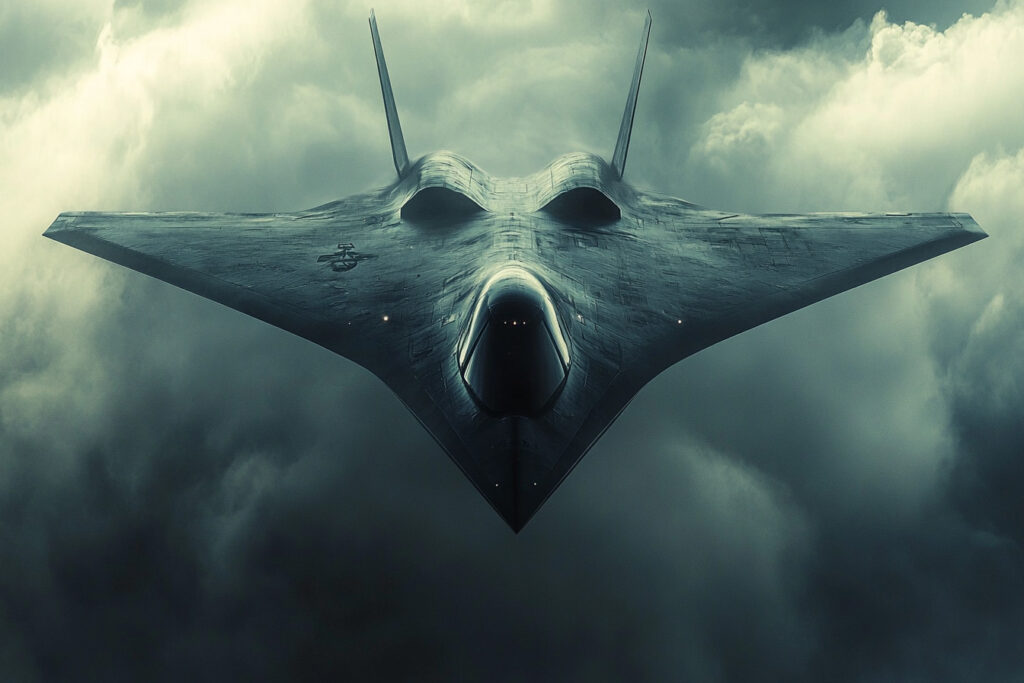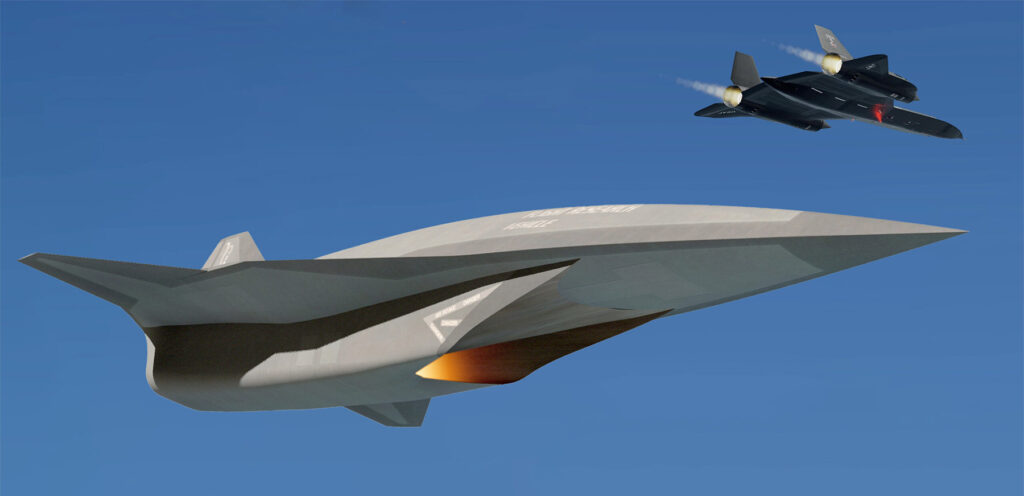
The SR-72, the hypersonic successor to the Blackbird, promises ISR and strike capabilities at Mach 6+. Find out more about its financial challenges and operational potential.
The SR-72, developed by Lockheed Martin, is a hypersonic reconnaissance and strike aircraft capable of exceeding Mach 6. This project, the successor to the famous SR-71 Blackbird, aims to revolutionise military operations by offering surveillance and strike capabilities at unprecedented speeds. However, the programme faces major financial challenges, having exceeded its 335 million dollar budget since 2022. Despite these obstacles, development of the SR-72 is progressing, promising significant operational capabilities for the US Air Force in the near future.

SR-72: A hypersonic successor to the SR-71 Blackbird
The SR-72, also known as the ‘Son of Blackbird’, is envisaged as the hypersonic successor to the SR-71, a legendary strategic reconnaissance aircraft used by the United States during the Cold War. The SR-71 could reach speeds in excess of Mach 3.2, but the SR-72 promises to break Mach 6, or around 7,200 km/h. This new aircraft would not only be limited to reconnaissance missions like its predecessor, but would also incorporate rapid strike capabilities, making it formidably effective in modern conflicts.
Development of the SR-72 began in 2006, but remained largely secret until its public announcement in 2013. Since then, Lockheed Martin, in collaboration with Aerojet Rocketdyne, has been working to design a revolutionary engine to enable the aircraft to achieve its ambitious goals. This project represents a major advance in military aeronautics technology, but it is not without its challenges, not least financial.
SR-72 engine technology and challenges
The SR-72 engine is one of the aircraft’s most innovative and complex components. Lockheed Martin has opted for a Turbine-Based Combined Cycle (TBCC) engine to propel the aircraft beyond Mach 6. This engine combines a conventional turbojet for subsonic speeds and a ramjet or scramjet for supersonic and hypersonic speeds. The main challenge with this type of engine lies in managing the transitions between the different propulsion modes at extremely high speeds.
The TBCC allows the aircraft to take off and reach supersonic speeds before switching to scramjet mode for hypersonic speeds. This type of engine is crucial if the SR-72 is to reach Mach 6, a speed at which the temperatures and pressures exerted on the aircraft’s structure are colossal. These thermal constraints require the use of advanced materials capable of withstanding temperatures in excess of 1,500°C, while maintaining a stable aerodynamic structure.
Aerojet Rocketdyne’s involvement in the development of this engine is significant, as the company specialises in advanced propulsion, including engines for hypersonic missiles. The success of the TBCC engine is essential if the SR-72 is to achieve its objectives of speed and versatility.
The financial challenges of the SR-72 programme
Despite its technological potential, the SR-72 programme faces significant financial challenges. According to recent reports, Lockheed Martin exceeded the project budget by $45 million in the second quarter of 2024, bringing total losses to $335 million since 2022. This highlights the company’s difficulties in funding the development of the aircraft largely from its own funds, in the absence of direct funding from the Pentagon.
Budget overruns are often unavoidable in projects of this scale, particularly due to the high cost of research and development of cutting-edge technologies such as the TBCC. However, these financial losses raise questions about the long-term viability of the programme, especially if the US government fails to provide adequate financial support to offset these initial investments.
Lockheed Martin is taking a risky approach in the hope that the Pentagon will recognise the strategic value of the SR-72 and fund its mass production, thereby recouping development costs. This strategy has been used successfully in the past, notably with programmes such as the F-117 Nighthawk, but it carries a significant risk in the current context of military budget constraints.
Potential impact of the SR-72 on military operations
The SR-72 could transform US military operations by offering a unique rapid strike and reconnaissance capability at hypersonic speeds. One of the major advantages of this aircraft is its ability to penetrate heavily defended airspace, making some existing anti-aircraft defences obsolete. At Mach 6, the SR-72 would be capable of striking targets across a continent in less than an hour, offering a rapid response to emerging threats.
The SR-72 could also play a crucial role in reconnaissance and intelligence operations. Unlike satellites, whose trajectories are predictable, a hypersonic aircraft like the SR-72 could carry out unpredictable surveillance missions and provide real-time information on areas of strategic interest. This would be particularly useful in conflicts in the Pacific, where vast distances and the need for rapid intelligence are crucial.
However, integrating the SR-72 into the armed forces will require major adjustments to military doctrines and logistical infrastructures, particularly for maintaining these sophisticated aircraft and training pilots and maintenance teams.

Technological advance: the SR-72 and the future of military aviation
The development of the SR-72 represents a major technological advance that could have long-term implications for military aviation. The introduction of an aircraft capable of flying at hypersonic speeds could lead to a re-evaluation of global military strategies, particularly with regard to power projection and rapid response to global threats.
In addition, the technologies developed for the SR-72, in particular the TBCC engines, could have applications beyond the military domain. For example, these engines could be used in the development of new types of hypersonic commercial aircraft, considerably reducing flight times between continents.
However, realising these technologies requires ongoing collaboration between companies like Lockheed Martin and government agencies, as well as a sustained financial commitment to overcome the technical and economic challenges associated with these cutting-edge projects.
Lockheed Martin’s SR-72, with its hypersonic capabilities and potential military applications, represents a significant advance in military aviation. Despite the financial and technical challenges, the potential of this aircraft to transform US military operations and influence the future of aeronautics is immense. It remains to be seen whether Lockheed Martin’s efforts will be sufficient to convince the US government to fully fund this revolutionary project.
War Wings Daily is an independant magazine.